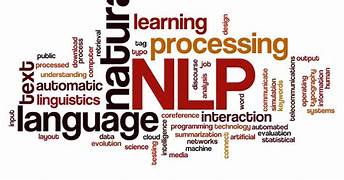What Are the Advancements in Natural Language Processing?
Natural Language Processing (NLP) is a transformative field at the intersection of computer science, artificial intelligence (AI), and linguistics. It focuses on enabling machines to understand, interpret, and generate human language. Over the past decade, advancements in NLP have revolutionized how humans interact with technology, ranging from virtual assistants to automated translation systems. This article delves into key advancements in NLP, the technologies driving its progress, and its applications across industries.
Foundations of Natural Language Processing
NLP involves multiple tasks aimed at bridging the gap between human language and machine understanding. These tasks include:
- Text Classification: Assigning categories or labels to text, such as spam detection in emails.
- Sentiment Analysis: Determining the emotional tone behind text, often used for customer feedback.
- Machine Translation: Translating text from one language to another.
- Named Entity Recognition (NER): Identifying proper nouns, organizations, dates, and other entities in text.
- Question Answering: Building systems capable of answering user queries accurately.
- Language Generation: Producing coherent and contextually relevant text, as seen in chatbots and content generation tools.
The evolution of NLP is underpinned by advancements in computational models, linguistic theory, and data availability.
Major Advancements in Natural Language Processing
1. Deep Learning and Neural Networks
The shift from traditional machine learning to deep learning has been instrumental in NLP’s progress. Neural networks, especially deep neural networks, mimic the human brain’s structure to process language.
- Recurrent Neural Networks (RNNs): RNNs, particularly Long Short-Term Memory (LSTM) models, introduced the ability to capture sequential data, such as text. They address the limitations of traditional models by retaining information over long sequences.
- Convolutional Neural Networks (CNNs): While traditionally used in computer vision, CNNs have also been applied to NLP tasks like sentence classification, proving effective in extracting spatial features from text.
2. Word Embeddings
Word embeddings are dense vector representations of words, capturing semantic meaning and relationships. Key innovations include:
- Word2Vec (2013): Introduced by Google, Word2Vec uses models like Skip-gram and Continuous Bag of Words (CBOW) to generate word embeddings, revolutionizing semantic understanding.
- GloVe (Global Vectors for Word Representation): Developed by Stanford, GloVe enhances embedding quality by leveraging word co-occurrence statistics.
These embeddings enable machines to understand the context and relationships between words, improving accuracy in various NLP tasks.
3. Transformer Models
Transformer architectures have reshaped NLP by enabling parallel processing and better contextual understanding.
- Attention Mechanism: Transformers introduced attention mechanisms to focus on relevant parts of the input sequence, regardless of position.
- BERT (Bidirectional Encoder Representations from Transformers): Developed by Google, BERT reads text bidirectionally, capturing context from both preceding and following words.
- GPT (Generative Pre-trained Transformer): OpenAI’s GPT series focuses on generative tasks, such as text completion, content creation, and conversational AI.
Transformers are the backbone of many state-of-the-art NLP models, enabling tasks such as language translation, summarization, and conversational AI.
4. Pre-trained Language Models
Pre-training has emerged as a key paradigm in NLP. Models are trained on massive datasets to learn general language features and then fine-tuned for specific tasks.
- ULMFiT (Universal Language Model Fine-tuning): One of the earliest frameworks for pre-training and fine-tuning NLP models.
- T5 (Text-to-Text Transfer Transformer): Developed by Google, T5 converts all NLP tasks into a text-to-text format, enabling consistency across various applications.
- XLNet: Builds upon BERT by introducing permutation-based training, capturing bidirectional and sequential dependencies more effectively.
5. Contextual Understanding and Beyond
Contextual models now excel in understanding nuances, idioms, and ambiguity in language.
- Sentence Transformers: Models like Sentence-BERT focus on understanding sentence-level semantics, enhancing tasks like semantic search and similarity detection.
- Multilingual NLP: Modern models like mBERT and XLM-R enable cross-lingual understanding, breaking barriers between languages.
Applications of NLP Advancements
1. Conversational AI
Conversational AI has benefited significantly from advancements in NLP, resulting in smarter and more natural interactions.
- Chatbots and Virtual Assistants: Tools like Siri, Alexa, and Google Assistant use NLP to understand user queries and provide relevant responses.
- Customer Support: AI-driven chatbots resolve customer queries efficiently, often simulating human-like conversations.
2. Machine Translation
Real-time translation tools, such as Google Translate and DeepL, have become more accurate thanks to neural machine translation (NMT) and transformers.
3. Sentiment and Emotion Analysis
Businesses use sentiment analysis to gauge public opinion, monitor brand reputation, and enhance customer experiences.
4. Content Generation
NLP models like GPT can generate articles, creative writing, and even code, enabling automation in content creation industries.
5. Healthcare
NLP powers applications in healthcare, including:
- Analyzing electronic health records.
- Assisting in clinical decision-making through predictive analysis.
- Conversational agents for mental health support.
6. Legal and Financial Sectors
NLP assists in contract analysis, fraud detection, and summarizing lengthy legal documents, improving efficiency and accuracy.
Challenges in NLP Advancements
1. Bias in Models
Pre-trained models often inherit biases from the datasets they are trained on, leading to skewed or discriminatory outputs.
2. Resource Requirements
Training and fine-tuning large models like GPT-4 demand significant computational resources, limiting accessibility.
3. Language Diversity
Many languages lack the extensive datasets available for English, resulting in poorer performance for less common languages.
4. Contextual Errors
Despite advancements, models still struggle with certain nuances, such as sarcasm or highly domain-specific language.
5. Ethical Concerns
Generative models can produce misleading or harmful content, raising concerns about misinformation and ethical use.
Future Directions in NLP
1. Multimodal Models
Future NLP systems will integrate text, images, audio, and video to enhance understanding and interaction.
2. Real-Time Processing
As computational efficiency improves, real-time language understanding and generation will become more widespread.
3. Personalization
NLP will enable highly personalized experiences, tailoring responses and content to individual preferences and contexts.
4. Democratization
Efforts are underway to make NLP technologies accessible for all languages and regions, promoting inclusivity.
5. Ethical AI
Future research will prioritize addressing bias, ensuring transparency, and promoting the ethical use of NLP.
Conclusion
Advancements in natural language processing have reshaped the way humans and machines interact, unlocking new possibilities across industries. From the development of transformer models to the proliferation of AI-powered applications, NLP continues to evolve, addressing challenges and setting new benchmarks. As researchers push the boundaries of language understanding, the future promises even greater strides, fostering a world where technology seamlessly integrates with human communication.


